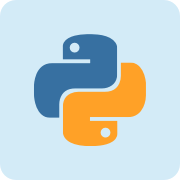Python参考手册
Python os.lchmod() 方法
Python os.lchmod() 方法
Python os.lchmod() 方法

概述
os.lchmod() 方法用于修改连接文件权限。
只支持在 Unix 下使用。
语法
lchmod()方法语法格式如下:
os.lchmod(path, mode)
参数
path -- 设置标记的文件路径
mode -- 可以是以下一个或多个组成,多个使用 "|" 隔开:
stat.S_ISUID:设置 UID 位
stat.S_ISGID: 设置组 ID 位
stat.S_ENFMT: 系统文件锁定的执法行动
stat.S_ISVTX: 在执行之后保存文字和图片
stat.S_IREAD: 对于拥有者读的权限
stat.S_IWRITE: 对于拥有者写的权限
stat.S_IEXEC: 对于拥有者执行的权限
stat.S_IRWXU:对于拥有者读、写、执行的权限
stat.S_IRUSR: 对于拥有者读的权限
stat.S_IWUSR: 对于拥有者写的权限
stat.S_IXUSR: 对于拥有者执行的权限
stat.S_IRWXG: 对于同组的人读写执行的权限
stat.S_IRGRP: 对于同组读的权限
stat.S_IWGRP:对于同组写的权限
stat.S_IXGRP: 对于同组执行的权限
stat.S_IRWXO: 对于其他组读写执行的权限
stat.S_IROTH: 对于其他组读的权限
stat.S_IWOTH: 对于其他组写的权限
stat.S_IXOTH:对于其他组执行的权限
返回值
该方法没有返回值。
实例
以下实例演示了 lchmod() 方法的使用:
#!/usr/bin/python
# -*- coding: UTF-8 -*-
import os, sys
# 打开文件
path = "/var/www/html/foo.txt"
fd = os.open( path, os.O_RDWR|os.O_CREAT )
# 关闭文件
os.close( fd )
# 修改文件权限
# 设置文件可以通过组执行
os.lchmod( path, stat.S_IXGRP)
# 设置文件可以被其他用户写入
os.lchmod("/tmp/foo.txt", stat.S_IWOTH)
print "修改权限成功!!"
执行以上程序输出结果为:
修改权限成功!!

| Python os.lchmod() 方法 |
|---|

Python 是一种面向对象的解释型计算机程序设计语言,由荷兰人 Guido van Rossum 于1989年发明,第一个公开发行版发行于1991年。 Python 是纯粹的自由软件, 源代码和解释器 CPython 遵循 GPL 协议。Python 语法简洁清晰,特色之一是强制用空白符( white space )作为语句缩进。
| 主页 | https://www.python.org/ |
| 源码 | https://github.com/python/cpython |
| 版本 | 2.7 |
| 发布版本 | 2.7.13 |
 加载中,请稍侯......
加载中,请稍侯......